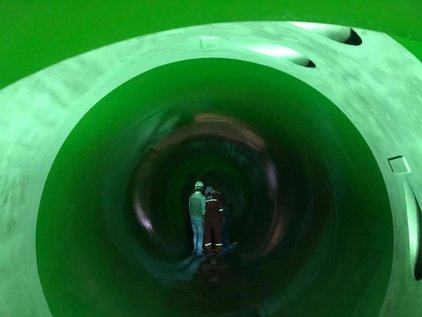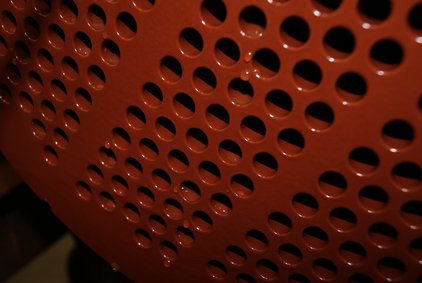Si 14 E
Phenolic Based Heat Cured Hydrophobic Lining for Highly Acidic to Weak Alkali Media. High Gloss, Dark Green Finish
SÄKAPHEN Si 14 E is a high-quality hydrophobic single-component phenolic based thermosetting heat cured lining. Si 14 E is self-priming and formulated and developed for direct to metal application.
Si 14 E is chemically resistant to organic and inorganic acids, salt solutions, aliphatic and aromatic hydrocarbons, fume gases, alcohols and cooling water including brackish, river, sea and deionized. Si 14 E is also resistant to temperature fluctuations.
The lining film surface is hard elastic with exceptional hydrophobic properties, preventing caking, fouling and incrustation.
All of the SÄKAPHEN heat cured range of products once polymerized are fully machinable.
For the lining and coating of Heat Exchangers, Condensers, Coolers, Air Coolers, Turbines, Impellers, Pipework, Meter Provers (Prover Loops), Desalination Plants, Centrifuges, ISO Tank Containers, Vessels and Storage Tanks.
| Product name | Unit | SÄKAPHEN® Si 14® E | |||
|---|---|---|---|---|---|
| Properties | - | Heat Cured Duroplast | |||
| Resin base | - | Phenolic resin blend | |||
| Field of Application | - | For the coating of heat exchangers, air coolers, condensers, turbines and compressor rotors, impellers, salt dissolving installations, pipeworks, prover loops, centrifuges, tank containers. | |||
| Cure Mechanism | - | Heat cured | |||
| Quantity of components | - | 1 | |||
| Color | - | Dark Green | |||
| Surface | - | Glossy | |||
| General chemical resistance (All resistances have to be inquired separately!) | - | Resistant to organic and inorganic acids, salt solutions, aliphatic and aromatic hydrocarbons, fume gases, alcohols, cooling water including brackish, river and sea water as well as deionized water. | |||
| pH Range | pH | 1 - 8 | |||
| Wet Film Thickness per layer | µm | 100 | |||
| Total dry film thickness | µm | 180-200 | |||
| Coverage | approx. kg/m²/DFT | 1 kg / m² / 200µm | |||
| Surface Preparation | Sa | SA2 ½ - SA 3 | |||
| Surface Profile | µm | 40 - 60 µm | |||
| Temperature resistance dry (dry air oven) | °C | -20°C to +180°C/200°C | |||
| Temperature resistance wet (water) | °C | -20°C to +180°C/200°C | |||
| Resistance to water vapor diffusion | °C | ≤ ∆T 30°C | |||
| Overcoating Waiting Time | hours/23°C | no time limitations | |||
| Chemical Curing | days | after final bake | |||
| Linear Thermal Expansion | µm | (VDE 0304): 33*10-6 mm/mm°C | |||
| Pore testing | Volts | 67,5 | |||
| Pendulum hardness acc. to König | 6° sec | 213 | |||
| Shore D Hardness | Shore D | 94 | |||
| Adhesion Test | N/mm² [MPa] | > 20 | |||
| Salt spray test | hours | 1400 | |||
| Impact Strength | mm (1 kg) | > 1000 | |||
| Surface smoothness (Ra) | µm Ø 3 readings | 0,89 | |||
| Surface tension | mN/m | > 28 < 35 | |||
| Taber Abrasion resistance, CS17 wheel, 1kg | mg/1000 r. | 14 | |||
| Crosscut | class | 0 (DIN EN ISO 2409) | |||
| Heat conductivity Ø 12,7x2,0mm on C-Steel with 67,37 w/mK | W/mK | 2,65 |
Phenoplasts were among the first commercially available plastics, the first large scale produced phenol resin is the phenol formaldehyde condensation resin. Phenoplasts are thermosetting plastics, produced on the basis of phenolic resins by curing.




